 |
www.ernst-christen.ch
Ernst's Velotouren |
| |
| Home |
| Reiseblog |
| Tourenarchiv |
| GPS-Daten |
| Infos & Tipps |
| Presse |
| Bücher |
| Kontakt |
| Radreise & Fern-radler Forum |
ENGLISH SITES |
| Travelblog |
| Route |
| Contact |
|
|
First stage Switzerland - Thailand
Part 9: West China part 1, October & November 2008 |
|
Finally
Monday had come and in the early morning we prepared ourselves to
cross the border after this four days holiday. But due to the devastating
earthquake the chinese authorities wanted to keep the border closed
for another 2 days, while the kyrgyz authorities opened the order
on their side because they had to accommodate hundreds of earthquake
survivors in the customs facilities. There was no more space even
for a few tourists. Finally we stood the whole day in the no man's
land between Kyrgyzstan and China waiting that China opened its
border at least for the few tourists. Eventually the chinese authorities
opened the border in the late afternoon. |
 |
|
Picture:
The border town Simhana. Finally in China! |
|
As
the whole landscape was still shaken by strong aftershocks we preferred
to camp a few kilometers away from the border town Simhana. During
the night we counted four partly quite strong aftershocks. |
 |
|
Pictures:
Sleeping far away of possibly collapsing builings. The nights in
heights of roughly 3000 meters are ice-cold. |
 |
|
Picture:
Group photo on a pass without name on the way to Kashgar (Photo
from www.orobici.altervista.org) |
 |
|
Picture: The
landscape towards Kashgar in the estern Pamirs is very dry. We are
getting close to the Takla Makhan desert. |
|
Mao
Zedong (1893 bis 1976) determined during nearly 30 years by his
function as chairman of the communist party of China the destiny
of the country. His big political campaigns had mostly disastrous
consequences for the people. Only the "the Great Leap Forward"
resulted in the biggest famine ever occured in world history and
demanded 40 to 75 millions of victims. Other millions of people
died through his dictatorial ruling, through expropriations, concentration
camps and through his last campaign, the "Cultural Revolution".
Until today Mao's probably most famous saying "political power
comes out of the gun" is reflected in the bad situation of
the human rights in China. |
 |
|
Picture:
Statue of Mao Zedong on the peoples' square in Kaschgar. During
his dictatorship millions of people had died due to its insane and
brutal politics. |
 |
|
Picture:
Uyghur kids in the old city of Kashgar |
|
It
is uncertain how long the uyghur cultur still can be preserved.
Already today, just after a few years of intensive chinese settlement
politics, the modern Kashgar, dominated by Han Chinese people, is
several times bigger than the original city. And the Chinese Central
Goverment continue to encourage millions of Han Chinese to settle
in the so-called autonomous provinces Xinjiang and Tibet. The native
cultures are getting ruthlessly ousted. |
 |
|
Picture:
In the bazar of the old town of Kaschgar |
 |
|
Picture:
The mausoleum of Abakh Hoja, a famous ruler of Kashgaria |
|
In Kashgar I met Jens from Berlin who is also on the way to Thailand with his bicycle. We have decided to ride together until Korla, about 1000 km. After a three days rest in Kashgar we were riding into the the Takla Makan desert, along the northern Silk Road towards Urumqi and Lanzhou. In the meanwhile the three italian bicycle friends are riding over the Karakorum Highway to Pakistan. |
 |
|
Picture:
On the way with Jens from Berlin |
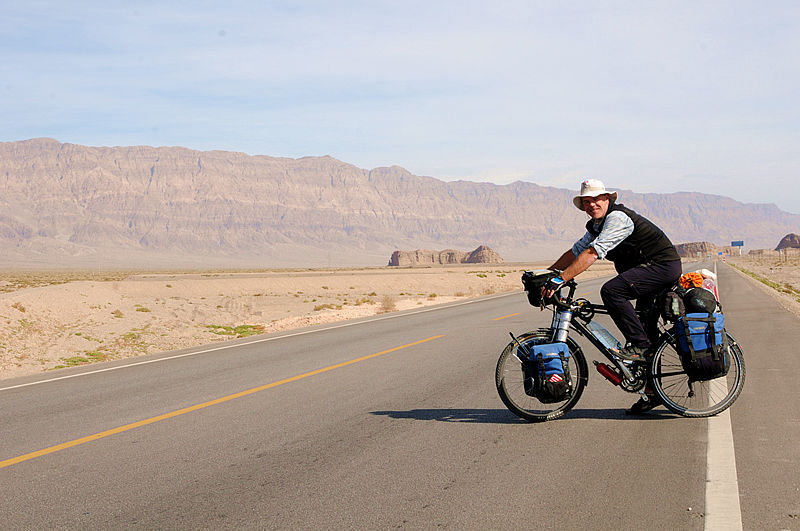 |
|
Picture:
On the northern Silk Road along the Takha Makhan desert. |
 |
|
Picture:
Uyghur girls fooling around |
 |
|
Picture:
Exactly 10'000 kilometers shortly behind Shiger in the Takla Makan
desert |
|
Once
again chinese settlement politics: Just 10 years ago the place of
Aksu was just a little uyghur oasis. Today it is a vibrating chinese
city. The original uyghur culture was swept away and the native
population of Xinjiang has become a fading and often discriminated
minority in its own land. |
 |
|
Picture:
Aksu on the northern Silk Road. Only about 10 years ago this place
was just a little uyghur oasis. |
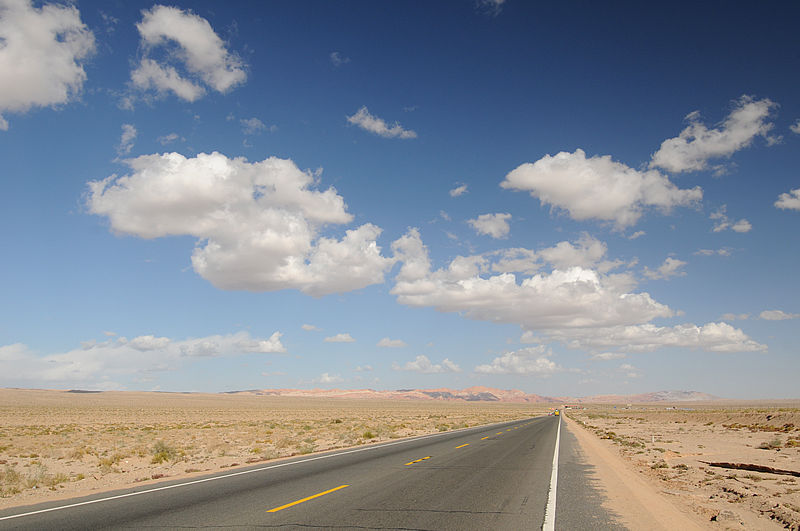 |
|
Picture:
Vast desert along the northern shore of the Takla Makan desert |
 |
|
Picture:
Enchanting sunset |
|
An
abrupt weather change was bringing grey sky and a temperature drop
by roughly 10° C. In heights over 2000 meters it was snowing
(in this part the northern Silk Road is constantly in a height of
around 1000 m). I was just hoping this is not the winter season
yet as the way to warmer regions was still very far. But the temperature
did not rise anymore and remained clearly under 10° C for the
remaining way through Xinjiang. |
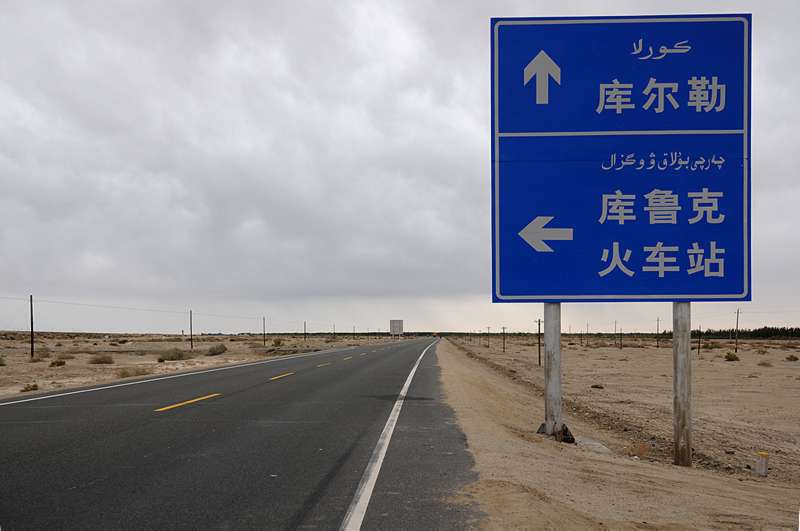 |
|
Picture:
I was not able to understand the signposts. Just
the comparison of the writings could help a little... |
 |
|
Picture:
The skyline of Korla. Roughly a fifth of the distance to South China
(Chengdu) is already done. |
|
I
didn't plan to take a break in Korla. But I had to rest for 3 days
since I catched a cold which had become a serious influenza. First
I wanted to sit the sickness out but then I decided to treat it
with appropriate drugs. |
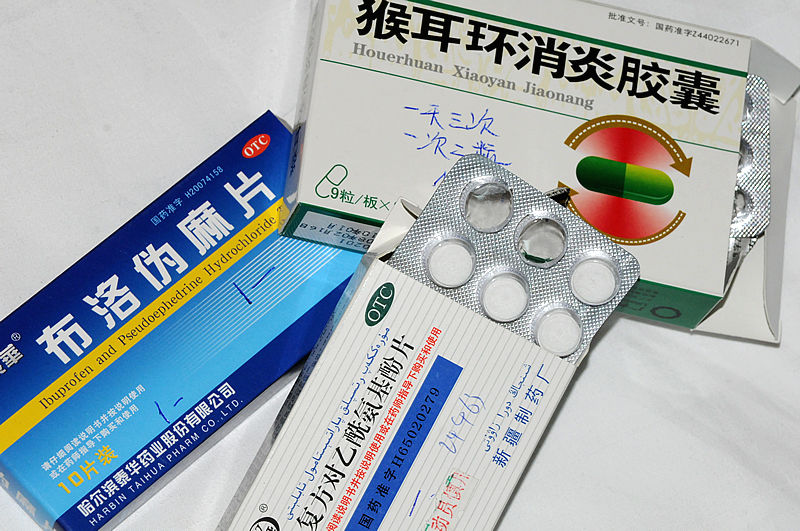 |
|
Bild:
Unintelligible packings and descriptions. |
|
After
three days of medical treatment the influenza was almost cured,
the beard was growing as before and the sound of my voice was also
not higher as usual. A complete success! And I felt really relieved!
So I continued my trip from Korla towards Turpan, crossed the Argaybulak
Pass and reached after a 50 km long descent the depression of Turpan. |
 |
|
Picture:
Sunset shortly in front of the Argaybulak
Pass on the Xinjiang highway. The
desert mountains still belong to the Tienshan mountain range. |
 |
|
Picture:
In the depression of Turpan. The lowest point is 156 meters below
sea level. |
|
A
vegetarian goes astray: The only menue I am able to order is "Tsou
mian", fried noodles. I just hope that the pieces of meat are
not dog (some chinese eat dogs!)! If yes I would have to eat roughly
half a dog on my way trough china. A horrible idea! Good news for all dog lovers who love the animal mainly outside of their plate: According to their taste the pieces of meat are probably pork or sheep. |
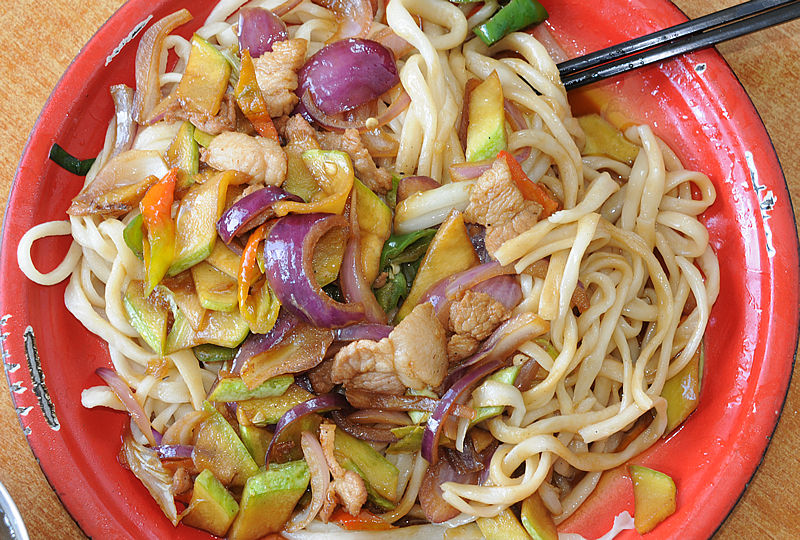 |
|
Picture:
Tsou Mian |
 |
|
Picture:
Camping in the Beishan desert which is part of the Gobi desert.
The nights are ice-cold in heights of about 2000 meters (-14°
C measured in the tent). During daytime the temperature is clearly
below 10° C. |
 |
|
Picture:
Camels in their natural enviroment |
|
In
every hotel room there is a TV set, no matter how cheap the hotel
is. Some of the stations also broadcast news in english. But the
coverages are limited to good news about the sector of agriculture
and industrialisation as well as the charity of the goverment. There
is no factual and critical coverage of political topics to see. |
 |
|
Picture:
English news in "Xinjiang TV-2" |
|
Arriving
in Jiayugan I also reached the western end of the Great Wall and
therefore the gate to the old imperial China. This place is also
considered as the end of the Silk Road. The Great Wall with its lenght of 6.350 kilometers is the largest building of the ancient world. The part of the wall seen in this picture was built during the Ming dynasty around 1540. |
 |
|
Picture:
In front of the Great Wall |
|
The
core of all fortifications around Jiayugan is the fort of the year
1372 which overviews the pass between the snow covered Qilianshan
and Heishu mountains. During the old imperial China many intellectuals,
poets, ministers and criminals were sent into exile or banishment
from the eastern gate of the fort. |
 |
|
Picture:
A look trough the gate of enlightment to the gate of reconciliation |
 |
|
Picture:
Painting on a door of the residential district of the fort |
|
On
my way through the Gobi desert I crossed more and more oases (see
picture) where I realized that it was already late autumn. Meanwhile
I was 600 km away from Lanzhou but there were still roughly 1500
km to ride to Chengdu with its warmer climate zone. So I really
had to hurry up to escape the winter. |
 |
|
Picture:
Late autumn in the province of Gansu |
 |
|
Picture:
One of the last campsites in the desert. More and more the desert
is making room to agriculturally used fields. |
|
In the last decades under the tyrannical rule of the communist party
buddhism was nearly completly eliminated - following Karl Marx who
had condemned religion as opium for the people. Some decades ago
the buddhist monasteries in China were full of life; today they
have become museums and are commercially exploited. The entry fee
is 5 € what is equivalent to 10 to 15 noodle soups. |
 |
|
Picture:
Painting in a former temple in Zhangye which shows the teaching
Buddha Sakyamuni |
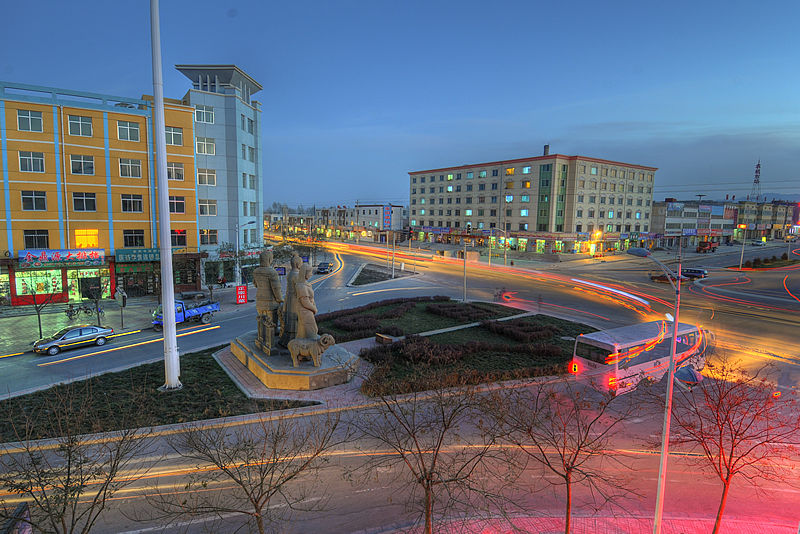 |
|
Picture:
Central crossroads in Yongchang in the dawn |
|
A
few days before arriving in Lanzhou the grim cold of the winter
had come over northern and western China, and despite all my efforts
to escape the winter I could not make it out of the cold. The highest
temperature did not even reach 5° C and the nights were clearly
frozen. Sometimes there was even falling a little snow! Arriving at the Yellow River I finished my ways through the vast deserts and steppes of western China and only a few hundred kilometers were remaining to Chengdu to the noticeable milder climate zone of southern China. |
 |
|
Picture:
Shortly before reaching Lanzhou at the banks of the Yellow river
which also marks the so called rice and noodle border |
|
China
covers 70% of its energy demand by coal and since this year has
taken over the position of the worldwide biggest enviroment polluter
(so far the USA was the big polluter). Today China produces 40%
of all harmful substances worldwide. The Peoples Republic of China
has signed the Kyoto protocol but as an emerging nation no restrictions
are defined regarding the output of greenhouse gases. |
 |
|
Picture:
A coal power plant at Lanzhou. Every single year every single coal
power plant burns the unimaginable quantity of 1'800'000 tons of
coal - and worldwide there are thousands of such power plants operating!
China alone is taking every 10 days a new coal
power plant into operation. |
|
In
the snow flurry and sea of lights of Lanzhou. Now the winter has
definitely come over northern China. As everybody is heating his
apartment with coal the air pollution is worst during the cold season
and the sky over the city remains gray almost the whole winter! |
 |
|
|
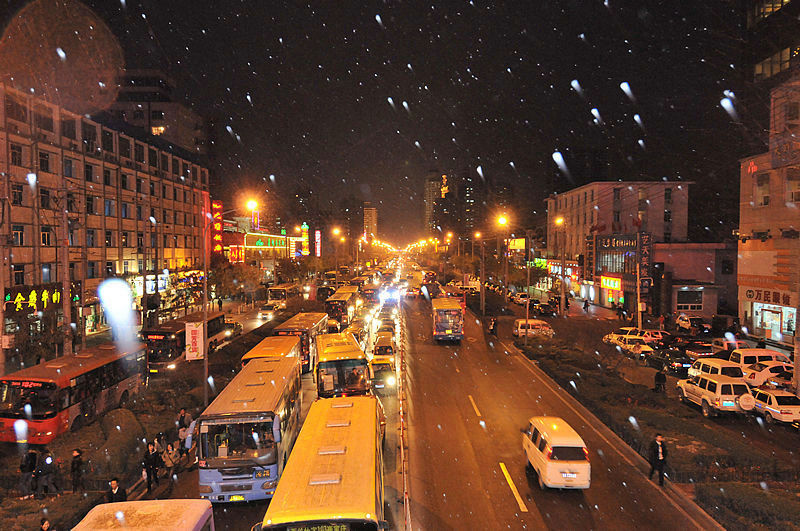 |
|
Picture:
Snow flurry in Lanzhou |
|
Next
page / Part 10: Western China part
2 |
| top |